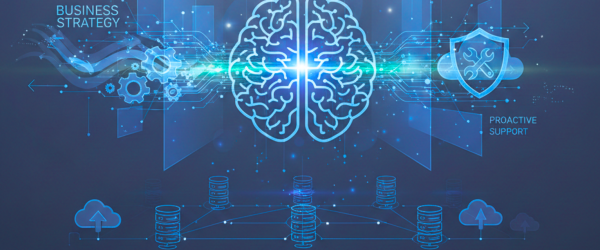
Introduction
Managing user data and privacy in banking isn’t just a checkbox item—it’s the very heartbeat of modern financial services. Think about it: would you hand over your hard-earned cash to a bank you don’t trust? Exactly! In this digital era, protecting user data is not optional; it’s a survival tactic. So, buckle up as we dive deep into how to handle user data and privacy like a pro in banking projects.
Why Data Privacy Matters in Banking
Trust is the Bank’s Currency
Banks don’t just manage money—they manage trust. Every login, every transaction, and every balance check is built on the unspoken promise that a customer’s information is safe. Lose that trust, and you might as well close shop.
Legal and Regulatory Requirements
Regulations like GDPR, CCPA, and others aren’t just for decoration. Violating them can mean massive fines and worse, public humiliation. Compliance is critical, and we’ll talk more about it soon.
Understanding the Types of User Data in Banking
Personally Identifiable Information (PII)
Names, addresses, social security numbers—all fall under PII. Losing this data could be catastrophic, not just for customers but also for a bank’s reputation.
Financial Information
This includes account numbers, transaction histories, and payment details. Needless to say, if this leaks, it’s game over.
Behavioral and Transactional Data
How users interact with online banking portals, spending habits, and login patterns—this data helps banks offer better services but must be safeguarded fiercely.
Common Threats to Banking User Data
Phishing Attacks
Hackers pretending to be a bank? Unfortunately, it happens all the time. One slip-up and sensitive data can fall into the wrong hands.
Insider Threats
Not all dangers come from outside. Sometimes, disgruntled or negligent employees can be the weak link.
Malware and Ransomware
Viruses designed to steal or encrypt data for ransom are an ever-present danger. Cybercriminals are getting smarter by the day.
Principles of Data Privacy Management
Data Minimization
Only collect what you absolutely need. Why stockpile information you don’t use? It’s like carrying around unnecessary luggage.
Purpose Limitation
Clearly define why you’re collecting each piece of data. No vague reasons allowed—customers and regulators want transparency.
Consent and Transparency
Always, always, always get informed consent. And make privacy policies readable—ditch the legal mumbo-jumbo.
Building a Strong Data Governance Framework
Data Ownership and Accountability
Designate who owns what data internally. If everyone’s responsible, no one’s responsible.
Establishing Data Policies and Procedures
Clear guidelines for data handling, storage, and disposal are essential. Think of it like house rules—but for data.
Best Practices for Securing User Data in Banking Projects
End-to-End Encryption
From the moment data is entered until it’s stored or used, encryption should shield it from prying eyes.
Multi-Factor Authentication (MFA)
A password alone is like a single lock on a treasure chest. MFA adds extra layers of protection.
Regular Security Audits
Security isn’t a one-and-done deal. Regular audits help catch vulnerabilities before the bad guys do.
Role of Compliance in Banking Data Management
GDPR and Its Banking Implications
European banks, in particular, must comply with GDPR’s strict rules around user consent, data storage, and breach notifications.
PCI DSS Compliance for Payment Data
Handling credit card information? Then PCI DSS compliance is your bible. Non-compliance isn’t just risky—it’s illegal.
Importance of Employee Training
Cybersecurity Awareness Programs
Employees are often the first line of defense. Regular training sessions can turn potential liabilities into cybersecurity champions.
Regular Drills and Updates
Simulated phishing attacks, updated best practices, and refresher courses keep everyone on their toes.
Leveraging Technology for Data Privacy
AI and Machine Learning for Threat Detection
AI can spot suspicious behavior that humans might miss—sort of like having a digital watchdog.
Blockchain for Data Integrity
Immutable and transparent, blockchain technology could revolutionize how banks verify and secure transactions.
How to Handle Data Breaches Effectively
Immediate Response Plans
Have a breach plan ready to deploy. Time is of the essence when sensitive data is compromised.
Customer Notification Protocols
Quick, honest communication with affected users can minimize fallout and rebuild trust.
Future Trends in Banking Data Privacy
Zero Trust Architecture
Zero Trust means exactly that—trust nothing and verify everything. It’s the future of cybersecurity.
Privacy-Enhancing Technologies (PETs)
Tech innovations like differential privacy are changing how banks handle big data without compromising individual privacy.
Challenges in Managing Data Privacy in Banking
Balancing Innovation with Privacy
How do you create cutting-edge banking apps without stepping over privacy boundaries? It’s a tightrope walk, but it’s doable.
Handling Cross-Border Data Transfers
Different countries have different rules. Navigating international data transfers is like solving a giant jigsaw puzzle.
Final Thoughts
User data is the crown jewel of any banking project. Managing it right isn’t just about avoiding fines or bad press—it’s about earning and keeping customer trust. By building strong governance, investing in the right technology, and maintaining a culture of privacy-first thinking, banks can create services that are both innovative and secure. It’s a marathon, not a sprint—but it’s one race you can’t afford to lose.
FAQs
What is the biggest threat to banking data privacy today?
The biggest threat today is sophisticated phishing attacks, often combined with social engineering, targeting both customers and employees.
How can banks ensure user consent is properly managed?
Banks can implement transparent opt-in mechanisms and regularly update users on how their data is used, making it easy to opt out whenever they choose.
Why is multi-factor authentication so important?
MFA adds extra security layers, making it much harder for attackers to breach accounts even if passwords are compromised.
Can blockchain really help secure banking data?
Yes, blockchain provides immutable records and enhanced transparency, making it extremely difficult for hackers to tamper with financial data.
What role does AI play in data privacy protection?
AI helps by detecting anomalies, predicting threats, and automating responses to potential breaches—basically acting like a super-smart security guard.






